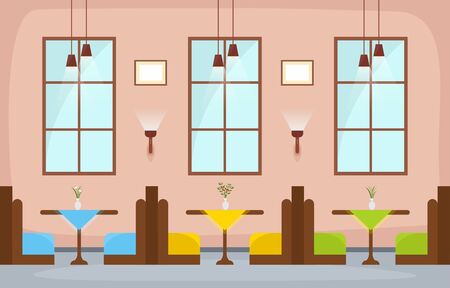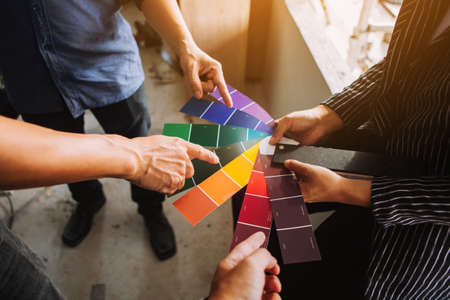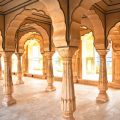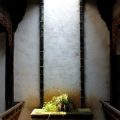1. Introduction to Indian Folk Art: A Kaleidoscope of Heritage
Indian folk art stands as a vivid testament to the country’s timeless cultural spirit, reflecting its diversity through intricate patterns and vibrant hues. From the hand-painted scrolls of Pattachitra in Odisha, the geometric simplicity of Warli art in Maharashtra, to the story-rich Madhubani paintings of Bihar and the elaborate Kalamkari textiles of Andhra Pradesh and Telangana, each regional tradition is a living archive of heritage, beliefs, and rituals. These art forms have not only preserved ancestral wisdom but also shaped India’s visual language over millennia. Rooted deeply in local customs and daily life, Indian folk art serves as both aesthetic expression and a repository of social narratives, celebrations, and spirituality. Today, their influence extends far beyond village walls—defining contemporary colour palettes and pattern trends in everything from fashion to home décor. By tracing the origins and significance of these traditions, we can truly appreciate how India’s rich folk artistry continues to inspire modern design sensibilities while honouring the past.
Traditional Colour Palettes Rooted in Culture
Indian folk art is a vibrant reflection of the countrys diverse heritage, where traditional colour palettes are deeply intertwined with local customs, rituals, and regional identities. The symbolic use of colours in folk arts like Madhubani, Warli, Pattachitra, and Kalamkari narrates stories that go beyond aesthetics—each hue carries layers of meaning rooted in centuries-old beliefs.
Colour Symbolism Across Indian Folk Arts
The following table highlights some iconic shades found in regional folk art, their cultural significance, and notable art forms where these hues are most prominent:
| Colour | Local Name | Cultural Meaning | Folk Art Forms |
|---|---|---|---|
| Pink | Gulabi | Symbolises love, femininity, celebration; often used during festivals and weddings. | Madhubani (Bihar), Phad (Rajasthan) |
| Yellow | Haldi | Represents purity, prosperity, auspiciousness; associated with turmeric rituals. | Pattachitra (Odisha), Gond (Madhya Pradesh) |
| Blue | Indigo/Nila | Evokes spirituality, calmness, cosmic energy; linked to Lord Krishna’s lore. | Kalamkari (Andhra Pradesh), Cheriyal Scrolls (Telangana) |
| Green | Mehendi/Hariyali | Stands for fertility, harmony with nature, new beginnings. | Sohrai (Jharkhand), Sanjhi (Uttar Pradesh) |
The Regional Flavour of Colour Combinations
Each region of India boasts its own signature palette. For example, Rajasthan’s Phad paintings are resplendent with bold reds and greens set against yellow backgrounds to signify warmth and vitality. In contrast, Bengal’s Patachitra artists favour indigo blue backgrounds with bursts of pink and white detailing to evoke mythological narratives. These combinations aren’t arbitrary—they result from generations of artistic evolution blended with available natural pigments and socio-religious contexts.
The Enduring Legacy of Folk Colour Schemes in Modern India
As contemporary Indian designers seek inspiration from folk arts, the timeless colour schemes—gulabi pink saris during Holi or haldi yellow motifs at weddings—remain ever-relevant. These palettes not only preserve ancestral wisdom but also adapt seamlessly into modern interiors, fashion trends, and festival décor across urban India. Thus, the language of colour in Indian folk art continues to bridge ancient symbolism with present-day expressions of identity.

3. Iconic Patterns and Their Narrative Motifs
India’s folk art heritage is a vibrant tapestry woven with recurring motifs and geometric patterns, each holding profound narrative and cultural resonance. Among the most iconic are paisleys, peacocks, tribal shapes, and floral designs—these are not mere embellishments but storied symbols reflecting the ethos of diverse regions.
Paisley: The Eternal Mango Motif
The paisley, known locally as ‘kairi’ or ‘mankolam’, traces its roots to ancient Indian textiles and continues to embellish sarees, shawls, and wall murals. Resembling a stylised mango, it symbolises fertility, abundance, and auspicious beginnings. Across Gujarat and Andhra Pradesh, artisans reinterpret this motif using natural dyes in vivid reds, indigos, and earthy greens—colours believed to invoke prosperity and ward off evil.
The Peacock: Grace and National Identity
From Madhubani paintings of Bihar to Pattachitra scrolls in Odisha, the peacock is celebrated for its elegance and spiritual connotations. As India’s national bird, it stands for beauty, grace, and divine protection. Folk artists often depict peacocks surrounded by intricate floral borders or beneath monsoon clouds, capturing themes of renewal and the cyclical rhythms of nature cherished in Indian philosophy.
Tribal Geometric Shapes: The Language of Community
Geometric patterns such as triangles, diamonds, chevrons, and circles are hallmarks of tribal artistry from regions like Warli (Maharashtra), Gond (Madhya Pradesh), and Bhil (Rajasthan). These shapes tell stories of daily life—harvests, festivals, dances—and serve as coded visual language connecting generations. Earthy ochres and whites dominate these palettes, echoing the local soil and chalk used in their creation.
Floral Designs: Blossoms of Celebration
Florals have an omnipresent role in Indian folk art—from the lotus in Mughal-inspired Kalamkari to marigolds in Rajasthani Phad paintings. Flowers are seen as carriers of blessings; they grace everything from rangoli patterns at doorsteps during Diwali to elaborate motifs on wedding textiles. Each petal’s hue is carefully chosen to align with local beliefs about luck, purity, or festivity.
Local Contexts: Colours Rooted in Tradition
The colour schemes accompanying these motifs are deeply influenced by geography and community identity. Indigo blues flourish along the Coromandel Coast where natural dyeing traditions persist; fiery reds dominate tribal art symbolising energy and life force; muted earth tones connect rural artisans to their ancestral lands. Together, these iconic patterns and colours narrate India’s collective memory—bridging ancient customs with contemporary expressions in fashion, décor, and public spaces.
4. Transcending Time: Evolution from Ancient to Modern Interpretations
Indian folk art has always been a vibrant testament to the country’s diverse heritage, with its roots anchored deep in regional traditions and ancient storytelling. However, these patterns and colour schemes have not remained static; they have evolved dynamically, adapting to contemporary tastes while preserving their cultural essence. This interplay of continuity and transformation can be observed vividly across home décor, fashion, and digital media in modern India.
Continuity in Colour Schemes and Patterns
Despite the march of time, certain colour palettes—such as earthy ochres, deep indigos, bright reds, and lush greens—continue to dominate Indian design, echoing the pigments once derived from natural sources. Folk motifs like paisleys from Kashmir, Madhubani flora from Bihar, or Warli stick figures from Maharashtra remain instantly recognizable, even as they are reinterpreted for new contexts.
Transformation in Application and Medium
The way folk art is applied has diversified remarkably. Traditional patterns that once adorned mud walls or saris now grace urban apartments, designer apparel, tech accessories, and even app interfaces. Contemporary designers blend age-old symbolism with minimalist or abstract aesthetics to suit metropolitan sensibilities without diluting cultural identity.
Examples of Folk Art Integration Across Sectors
| Sector | Traditional Element | Modern Interpretation |
|---|---|---|
| Home Décor | Pattachitra wall murals | Cushion covers with stylized Pattachitra prints |
| Fashion | Kalamkari hand-painted fabrics | Kalamkari-inspired digital prints on Indo-western garments |
| Digital Media | Madhubani border patterns | User interface icons and backgrounds with Madhubani motifs |
| Lifestyle Accessories | Warli painted pots | Tote bags and mobile cases featuring Warli stick figures |
Sustaining Cultural Essence Amidst Change
What distinguishes India’s approach is the careful balance between innovation and tradition. Artisans and designers consciously retain the narrative power of folk stories—whether depicting mythological tales or rural life—even as they experiment with new materials, printing technologies, or global style influences. The result is a living tradition: one that evolves with each generation but never loses sight of its roots.
5. Region-Specific Inspirations Shaping Pan-Indian Trends
India’s folk art is a vibrant tapestry woven from the unique cultural identities of its diverse regions, each contributing distinct colour schemes and pattern sensibilities to the national design narrative. The interplay of local traditions and broader trends can be seen in how regional styles like Rajasthan’s bold contrasts, Bengal’s earthy motifs, Odisha’s intricate iconography, and Maharashtra’s geometric simplicity have shaped contemporary aesthetics across India.
Rajasthan: Celebrating Boldness and Vibrancy
The folk art of Rajasthan, such as Phad and Pichwai, is renowned for its vivid palettes—emerald greens, sunset oranges, and deep indigos—reflecting the desert landscape and royal heritage. These colours and motifs inspire modern Indian fashion and interiors, where jewel-toned textiles and stylised flora-fauna patterns evoke a sense of regal tradition blended with contemporary flair.
Bengal: Earthy Elegance and Storytelling
Bengal’s Patachitra and Kantha embroidery are rooted in narrative tradition, using natural dyes and earthen hues like terracotta red, ochre yellow, and leafy greens. Their repetitive storytelling patterns now influence pan-Indian print design, especially in sustainable fashion lines and handcrafted homeware that prioritise organic materials and artisanal charm.
Odisha: Divine Detailing in Modern Design
Pattachitra from Odisha stands out for its intricate lines, mythological themes, and use of saturated primaries on muted backgrounds. This state’s folk legacy is evident in contemporary graphic design and wall murals seen across urban India—where detailed linework meets minimalist spatial composition, bridging ancient artistry with modern visual clarity.
Maharashtra: Geometry Meets Everyday Utility
Maharashtra’s Warli art utilises simple geometric forms—circles, triangles, squares—to depict rural life in stark white against earthy brown. The minimalism of Warli has become an emblem of Indian modernity, influencing packaging design, corporate branding, and even digital interfaces that seek authenticity through simplicity.
Cross-Pollination Creating New Aesthetics
The migration of artisans, rise of digital platforms, and collaborative projects have led to a cross-pollination where regional idioms blend into pan-Indian trends. Today’s designers draw from this living reservoir—combining Rajasthani exuberance with Bengali subtlety or fusing Warli geometry with Odisha detailing—to create hybrid patterns that resonate both locally and globally. In this way, India’s region-specific folk inspirations continue to shape a dynamic design ecosystem that honours roots while embracing innovation.
6. Folk Art Integration in Urban and Global Contexts
India’s vibrant folk art traditions are no longer limited to rural landscapes or heritage exhibitions; today, their influence is evident across urban spaces and global design markets. As metros like Mumbai, Bengaluru, and Delhi rapidly urbanise, designers and architects are increasingly turning towards traditional Indian folk art-inspired colour schemes and patterns to add a unique cultural flavour to modern interiors, public installations, and commercial branding. This creative fusion is not only about visual appeal but also about telling a story of continuity, identity, and innovation.
Urban Adaptation: Blending Heritage with Modernity
The pulsating energy of Indian cities has given rise to a new wave of interior design and fashion where Warli motifs, Madhubani borders, and Kalamkari palettes are adapted to suit contemporary tastes. Soft furnishings in homes may feature geometric reinterpretations of Gond art or the earthy ochres of Bhil painting, while corporate offices employ folk-inspired murals to foster an atmosphere of inclusivity and rootedness. The use of vivid hues such as vermilion red, turmeric yellow, indigo blue, and leaf green—each deeply embedded in India’s folk traditions—provides a striking contrast to the otherwise neutral tones popular in international design trends.
Global Influence: Reimagining Folk Art for International Appeal
Indian folk art’s global journey is fuelled by the diaspora’s nostalgia as well as international appreciation for handcrafted authenticity. Designers collaborate with artisans from states like Rajasthan and Odisha to create home décor collections that blend Phad or Pattachitra patterns with minimalist Scandinavian forms. These cross-cultural products often employ sustainable materials such as organic cotton, natural dyes, or reclaimed wood—appealing to eco-conscious consumers worldwide who seek ethical luxury with a story. The intricate yet bold folk patterns serve both as conversation starters and as reminders of India’s artistic ingenuity on the world stage.
Sustainable Practices and Social Impact
In the quest for sustainability, modern brands are reviving time-honoured dyeing techniques—like using indigo leaves or vegetable-based pigments—to reduce environmental impact. Start-ups and established labels alike partner directly with rural artisan clusters to ensure fair wages and preserve endangered crafts. By integrating traditional aesthetics into contemporary lifestyles—be it through upcycled saree upholstery in cafes or hand-painted tiles in boutique hotels—urban India demonstrates how folk art can be a catalyst for both ecological balance and social empowerment.
Thus, the integration of Indian folk art-inspired colours and patterns into urban living and global commerce is more than just a trend; it is a thoughtful confluence of tradition and innovation that celebrates diversity while fostering sustainability for future generations.
7. Conclusion: Sustaining Heritage Through Innovative Design
Folk art has always been the heartbeat of Indian visual expression, breathing life into everything from textiles to temple murals with its distinct colour palettes and motifs. These artistic traditions, rooted in diverse regional cultures—be it the vivid Madhubani of Bihar or the earthy Warli of Maharashtra—have continuously influenced India’s aesthetic identity. Today, as urbanisation and global trends reshape Indian sensibilities, folk art-inspired colour schemes and pattern trends remain remarkably relevant. They serve not just as a nostalgic bridge to our past but also as a dynamic canvas for contemporary innovation.
The enduring appeal of these traditional designs lies in their adaptability. Designers across India now reinterpret classic motifs using digital tools and sustainable materials, infusing them into modern architecture, fashion, and even tech interfaces. This fusion ensures that folk art does not remain static or relegated to museums but instead evolves with the times, resonating with younger generations who are eager to celebrate their heritage in new ways.
Innovation is the key to keeping this cultural legacy vibrant in the 21st century. By embracing new techniques while respecting the core essence of folk art, creatives can foster a living tradition that continues to inspire pride and belonging among Indians everywhere. In this way, India’s rich tapestry of colour schemes and patterns will endure—not merely as relics of the past, but as ever-evolving symbols of national identity and creative optimism.


